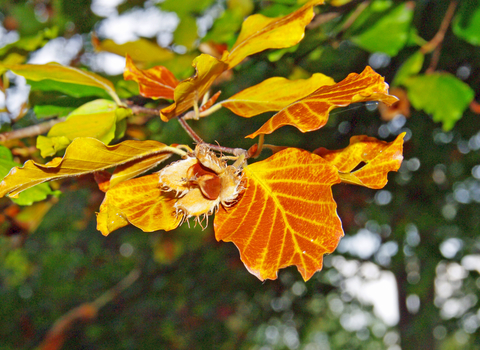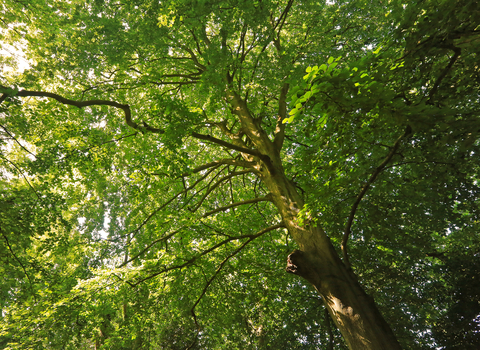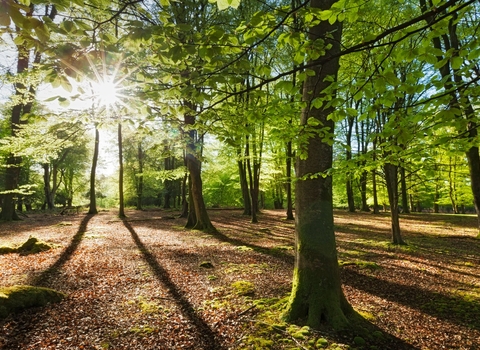
©Gillian Day

©Jon Hawkins/Surrey Hills Photography

©Mark Hamblin/2020VISION
Common beech
An iconic tree, particularly in the south of the UK, the Common beech stands tall and proud in woodlands and parks. It turns beautiful golden-brown in autumn, strewing the floor with its 'mast' (nuts).
Scientific name
Fagus sylvaticaWhen to see
January to DecemberSpecies information
About
The Common beech is one of our most iconic trees, particularly in the woodlands of the south, such as those found in the Chilterns. Here, it grows tall and broad, turning a shining golden-brown in autumn as its leaves die, and littering the woodland floor with its nuts (known as 'mast'). Beech wood is used for furniture and ornaments; from the 18th century onwards, straight-trunked, uncoppiced trees became a more frequent site in woods and parks - ideal for timber.How to identify
The Common beech has shiny, soft, oval leaves; smooth, grey bark; torpedo-shaped buds; and large, hairy fruit that contain the beech nuts.Distribution
Widespread in Southern and Central England; widely planted elsewhere.In our area
Sections of beech woodland can be found around the lower slopes of the Wrekin and at Earl's and Pontesford Hills.
Did you know?
The Common beech has been cultivated for many years, producing some beautiful varieties, including the deep red Copper beech.Sections of beech woodland can be found around the lower slopes of the Wrekin and at Earl's and Pontesford Hills.

